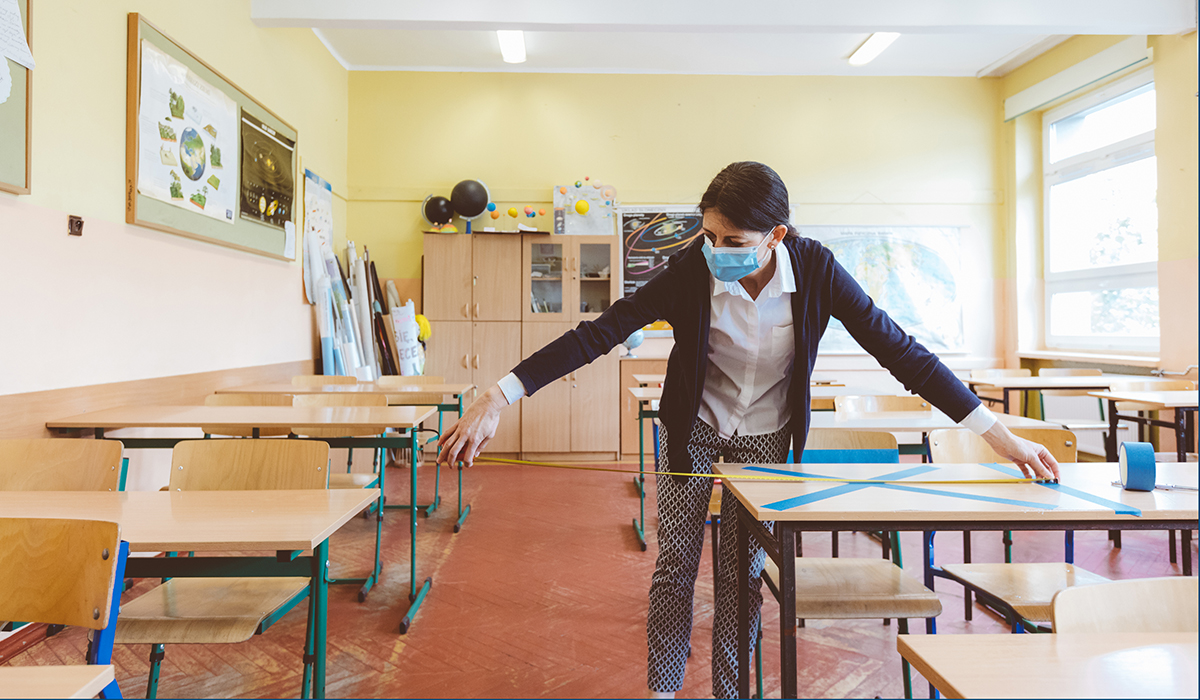In a flurry of activity on Friday, the Centers for Disease Control and Prevention and the California Department of Public Health held a series of press conferences on school reopening and issued new tools and guidance meant to support the return to in-person instruction.
Although the CDC guidance was highly anticipated, the final product was somewhat anticlimactic. The agency’s “Operational Strategy for K-12 Schools through Phased Mitigation” provides an overview of steps local educational agencies can take to reopen schools nationwide. It stops short, however, of calling on districts to reopen schools, instead using data to expand on current recommendations to “layer” preventive measures to resume in-person instruction in relative safety.
The dominant theme of the CDC’s press conference was captured in this line from the guidance: “Schools should be the last settings to close after all other mitigation measures in the community have been employed, and the first to reopen when they can do so safely.”
CDC Director Dr. Rochelle Walensky stated that the CDC is not mandating that schools reopen (and noted that she had no authority to do so) but added that her agency determined that many K-12 schools have used mitigation strategies to safely open for in-person instruction and remain open. Backed by a review of scientific and anecdotal evidence, the new release was described as a “one-stop shop” to provide LEAs with information and strategies to help keep students and staff safe.
The new guidance emphasizes the use of layered mitigation strategies to provide the most protection. The five key layers are:
- Universal and correct use of masks should be required
- Physical distancing (at least 6 feet) should be maximized to the greatest extent possible
- Handwashing and respiratory etiquette
- Cleaning and maintaining healthy facilities
- Contact tracing in combination with isolation and quarantine, in collaboration with the health department
When planning for in-person instruction, schools should place particular emphasis on universal and correct masking and physical distancing as top priorities for implementation. These strategies have the greatest potential for reducing transmission and can also be monitored for consistent and correct implementation.
To supplement the new operational guidance, the U.S. Department of Education is releasing the first volume of its ED COVID-19 Handbook, Volume 1: Strategies for Safely Reopening Elementary and Secondary Schools, which provides practical examples for how to implement mitigation strategies.
The CDC update does diverge from prior guidance in a few significant ways. The latest version includes a color-coded chart, somewhat similar to CDPH’s tiers for classifying spread, that divides school reopening options into four categories: blue, yellow, orange and red.
The CDC recommends that districts in blue areas with low levels of community spread (defined as 0-9 new cases per 100,000 in past seven days) and yellow areas with moderate transmission rates (defined as 10-49 new cases per 100,00 in past seven days) consider resuming full, in-person instruction. Schools in the orange tier (50-99 new cases per 100,000) may consider a limited reopening if they believe they can successfully layer multiple safety strategies. CDC offered largely the same guidance as the orange tier for red communities with more intense levels of spread (more than 100 new cases per 100,000), saying they could consider a limited reopening for students — but only at the elementary school level. The CDC recommends that middle and high schools in red areas remain in distance learning unless all the mitigation strategies can be met.
CDPH releases Safe Schools Reopening maps
The California Department of Public Health today quietly released three maps that track the reopening status of district, charter and private schools throughout the state. The modes of instruction include in-person, hybrid and distance learning only. If there is no information displayed for an LEA, it means that none was submitted. This release comes as schools await the announcement of a school reopening deal from Gov. Gavin Newsom and the Legislature amid pressure from CSBA and school leaders across the state to ensure that any plan reflects the real needs of students, schools and educators.
The information displayed on the Safe Schools Reopening maps is based on self-reported data collected by the California Collaborative for Educational Excellence and county offices of education in response to a health directive from the CDPH. Local educational agencies are required to submit the information every two weeks as of Jan. 25. The new tool can help LEAs evaluate and refine their reopening plans.
CDPH will be adding other key data to the map, including outbreaks reported in each school district and whether the school has partnered with the Valencia Branch Lab for COVID-19 testing. To provide up-to-date information, schools will input their data every two weeks. Additional data, including student enrollment data, will be collected and displayed publicly, subject to legislative approval.
Additional information provided includes if an LEA that is providing in-person instruction has posted their COVID-19 Safety Plan on their website. Also included is information on COVID-19 funding that was provided to school districts and charter schools from state and federal funds to address pandemic-related issues. It includes three sources of funds Learning Loss Mitigation Funds, Federal Elementary and Secondary Schools Emergency Relief funds and Federal Elementary and Secondary Schools Emergency Relief funds II. It only tracks this targeted funding and does not represent total state and federal funding.
The maps are currently being provided as a Beta release and will continue to be refined and developed, officials said, noting that there may be technical issues or data inaccuracies during this time.




